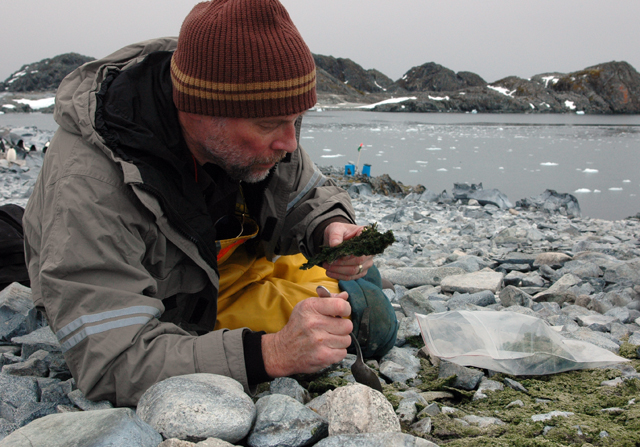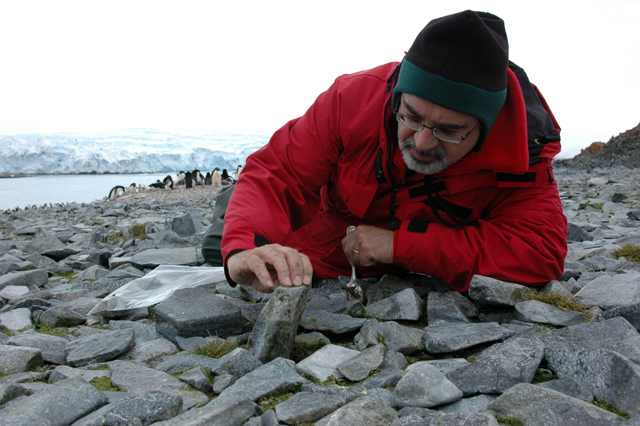Not much bugs BelgicaAntarctic insect focus of new NSF-funded projectPosted January 29, 2010
Richard Lee They’re insects all right, but no species of ant lives this far south, here on one of the many granite and basalt islets that mark the southern extreme of the Palmer Archipelago off the west coast of the Antarctic Peninsula. These are adult Belgica antarctica, a flightless midge endemic to the continent. The wingless flies are ubiquitous on the islands near Palmer Station The Antarctic Connection
“We have seen more adults than we have ever, ever seen before on all of the islands. Every place we’ve gone. It’s just amazing,” Lee exclaims repeatedly as he and other members of the “buggers” team turn over rocks and algae mats looking for what the entomologists like to say is Antarctica’s biggest terrestrial animal. The larger fauna like Adélie penguins and elephant seals only spend part of their lives on solid land. So, at a maximum length of about 7 millimeters, Belgica earns its boasting right as Antarctica’s largest land animal a bit by default. “An amazing number of adults,” David Denlinger Today the Belgica larvae not on Torgersen, or Torgy, as the station personnel refer to the island, a short boat ride away from the base. The team digs up a few more of the adults, returns the earth to a semblance of its former state, and piles back into an inflatable Zodiac boat. They figure nearby Humble Island, where they’ve had their best success, will save the day’s fieldwork. Going to extremesLee and Denlinger are the principal investigators on a four-year grant from the National Science Foundation’s Office of Polar Programs Both men call Ohio home. Lee is the director of the Laboratory of Ecophysicological Cryobiology at Miami University On that trip, he and his colleagues first characterized the stress tolerances of this unique midge — its ability to survive extreme desiccation, losing nearly all its moisture, and survive freezing temperatures that would kill most other related species. Those data were the foundation of a grant proposal that brought Lee back to this remote research outpost on an NSF grant beginning in 2005. “Now we’re coming back after the molecular revolution with entirely new techniques to look at mechanisms and how they tolerate these stresses,” Lee explains. He teamed up with longtime colleague Denlinger, a professor in the Department of Entomology at The Ohio State University It made perfect sense that the two scientists should go to the extreme limits of where insects can survive and still thrive — this wind-blasted region where dark clouds often blanket the region in a Seattle-like dreariness — to learn more about the ultimate winter slumber party.1 2 3 Next |



For USAP Participants |
For The Public |
For Researchers and EducatorsContact UsNational Science FoundationOffice of Polar Programs Geosciences Directorate 2415 Eisenhower Avenue, Suite W7100 Alexandria, VA 22314 Sign up for the NSF Office of Polar Programs newsletter and events. Feedback Form |



